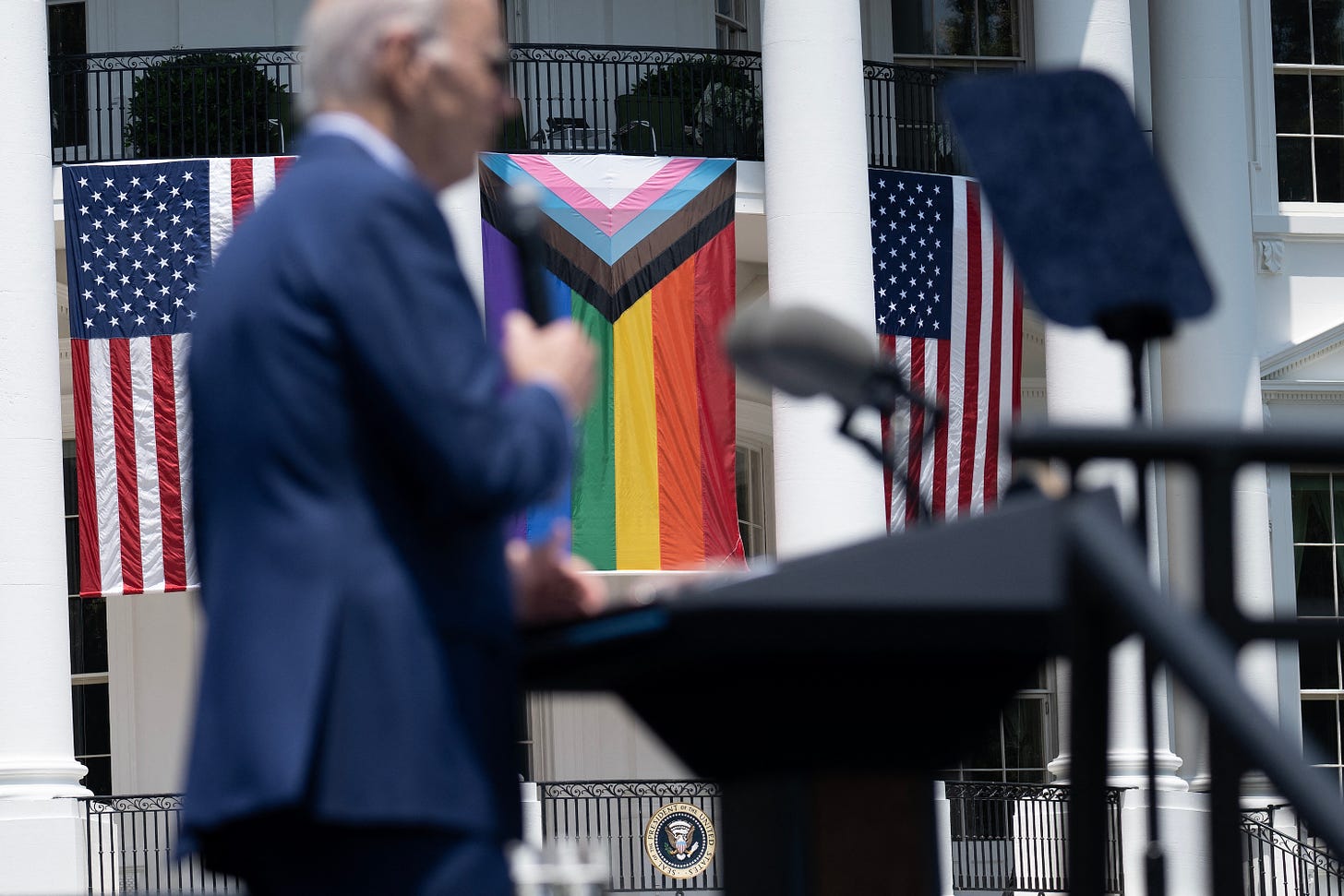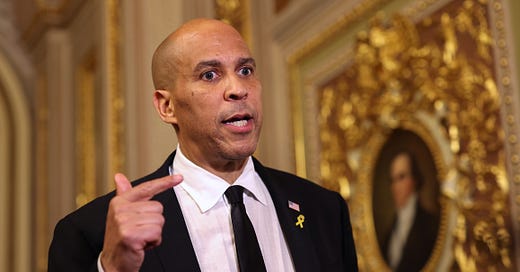
What Election Reformers Can Learn from the Same-Sex Marriage Push
This Pride Month, a look back at how something that seemed all but impossible two decades ago became widely popular.

IN DECEMBER 2022, PRESIDENT JOE BIDEN signed a bipartisan bill that just two decades earlier seemed like a far-off dream for its advocates: the Respect for Marriage Act. The law, which solidified the rights granted in the 2015 Supreme Court ruling Obergefell v. Hodges, felt surreal to me, as a gay man who didn’t come out until after college in 2012, and even then, only to friends and family. When I ran for Congress in 2014 in a conservative rural district in Pennsylvania, I chose not to disclose this part of my identity; I did not feel comfortable doing so.
That was the radically different world of just ten years ago and a reminder of how much things can change in a relatively short period of time if the groundwork is patiently laid first. Now, for those of us working to advance nonpartisan election reforms at the state level and nationally—like my colleagues and I at Unite America—the marriage-equality movement offers hope and guidance for how we, too, can accomplish what may seem impossible. These lessons are especially important in 2024—a time when Americans of all political persuasions believe our country is heading in the wrong direction.
By the turn of the century, same-sex marriage remained largely a matter of discussion in the pages of policy and political magazines, with writers like Jonathan Rauch and Andrew Sullivan making the case for it but few politicians willing to discuss it as a serious proposal. Well into the 2000s, supporting same-sex marriage wasn’t just outside of the political mainstream—it was a third-rail issue. In November 2003, the highest court in Massachusetts ruled that that state’s constitution required equal marriage rights for everyone. The following year, the GOP sponsored eleven successful ballot initiatives banning same-sex marriage, even though none of those states were anywhere close to passing laws legalizing same-sex marriage at that point; it was primarily a gambit intended to drive up voter turnout in a presidential election year.
That will sound all too familiar to election reformers. In the last few years, nine states have banned innovative election reforms before any city in their state has even adopted it.
Things remained tough for the marriage-equality movement in the years that followed. That included presidential candidate Barack Obama affirming “I believe that marriage is the union between a man and a woman.”
But activists didn’t give up. They kept working state by state, legislature by legislature, court by court, ballot initiative by ballot initiative. High courts in California, Connecticut, and Iowa ruled in favor of same-sex marriage in 2008 and 2009 (although a ballot measure in California soon overrode the judicial ruling there). Lawmakers in Vermont and New Hampshire legalized same-sex marriage in those states in 2009. Then came New York in 2011, Maine and Maryland and Washington in 2012, and then more and more.
The progress was gradual but unmistakable, and the tide of mainstream opinion began to turn. Public support for same-sex marriage, which had hovered around 40 percent for several years, began to rise around 2010. In May 2012, many were shocked when then–Vice President Biden declared he was “absolutely comfortable” with it. By the time of the Obergefell decision in 2015, public support for marriage equality had risen to 60 percent. Today, more than 70 percent of American adults support same-sex marriage, and some 76 percent support nondiscrimination protections for LGBTQ people.
AT FIRST, MARRIAGE EQUALITY seemed extremely idealistic, if not impossible—yet it became a reality. In that regard, there are some lessons that today’s supporters of election reform can draw.
For starters, it took a blend of bipartisan strategies—including legislative, electoral, and legal efforts—for the marriage-equality campaign to succeed. Further, depending on what was most viable, some states went for marriage, others for civil unions, and still others for non-discrimination laws.
As “laboratories of democracy,” each state requires a different pathway toward reform. In states like Alaska, a ballot initiative process makes possible powerful reforms like top-four primaries and instant runoff general elections. In states like Pennsylvania, where the legislature is the only avenue for change, change may have to be more incremental—such as allowing all independent voters to vote in party primaries.
The marriage equality movement also succeeded in winning over skeptics by focusing on a message of equal human dignity. Advocates talked less about material benefits and more about the emotional impact of marriage—the deeply human desire to join in lifelong union with a partner. They replaced their talk of rights and obligations with an emphasis on love and commitment.
Election reformers need to make a similar pivot to win hearts and minds. Instead of talking about voting mechanics, we should relentlessly focus on the need to give voters their voice and choice back—and how reform can address the deep disillusionment many feel in a system where a tiny fraction of voters elects the vast majority of our U.S. representatives. For example, according to an analysis by Unite America, just 8 percent of the voters in the 2022 midterm elections were responsible for electing 83 percent of the membership of the House.
Another lesson from the gay-rights movement: Prepare for the tipping point. To borrow from Hemingway, change tends to happen “gradually and then suddenly.” Following Louisiana’s abolishment of party primaries in the 1970s, it took more than thirty years for voters in Washington State to pass a top-two nonpartisan primary system. California was next in 2010, and then Alaska with top-four in 2020. Progress has been gradual, but it is undoubtedly accelerating.
This year, the change could be sudden. Voters in two states (Nevada and South Dakota) will have the chance to replace the traditional party primary system, and in four other states (Idaho, Colorado, Montana, and Arizona) reformers are working to put similar measures on the 2024 ballot.
Of course, same-sex marriage is a very different issue from election reform, but we can still draw crucial lessons from the former: that the issue can be framed in moral and emotional terms; that it must be pursued on an incremental, state-by-state basis; and that success will take patience, hard work, and courage.
Nick Troiano is executive director of Unite America, a philanthropic venture fund that invests in nonpartisan election reform to foster a more representative and functional government. He is the author of The Primary Solution: Rescuing Democracy from the Fringes.
















